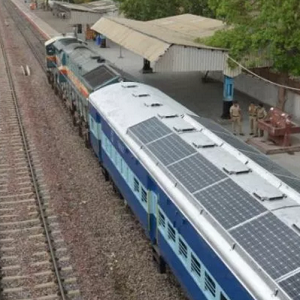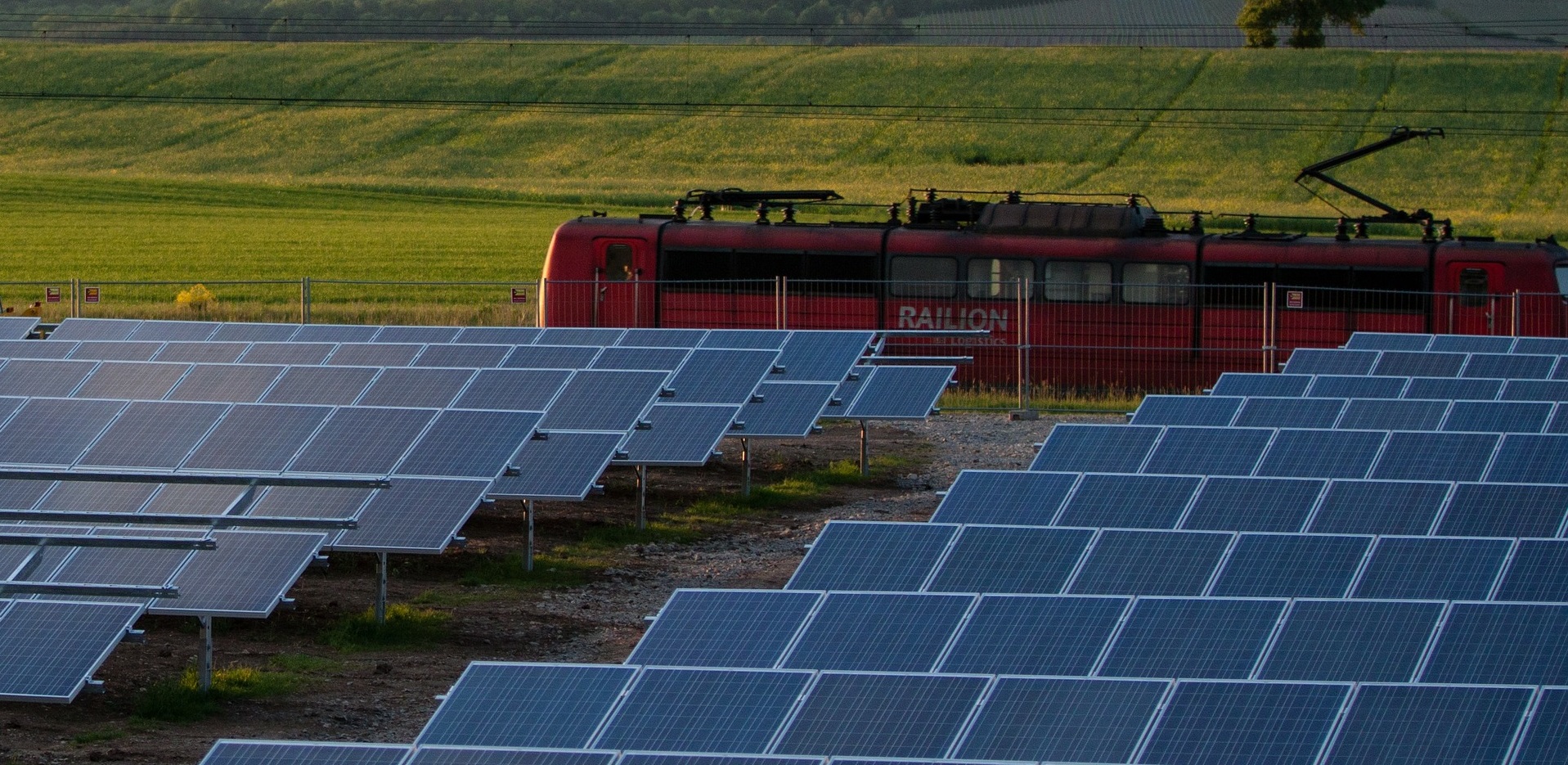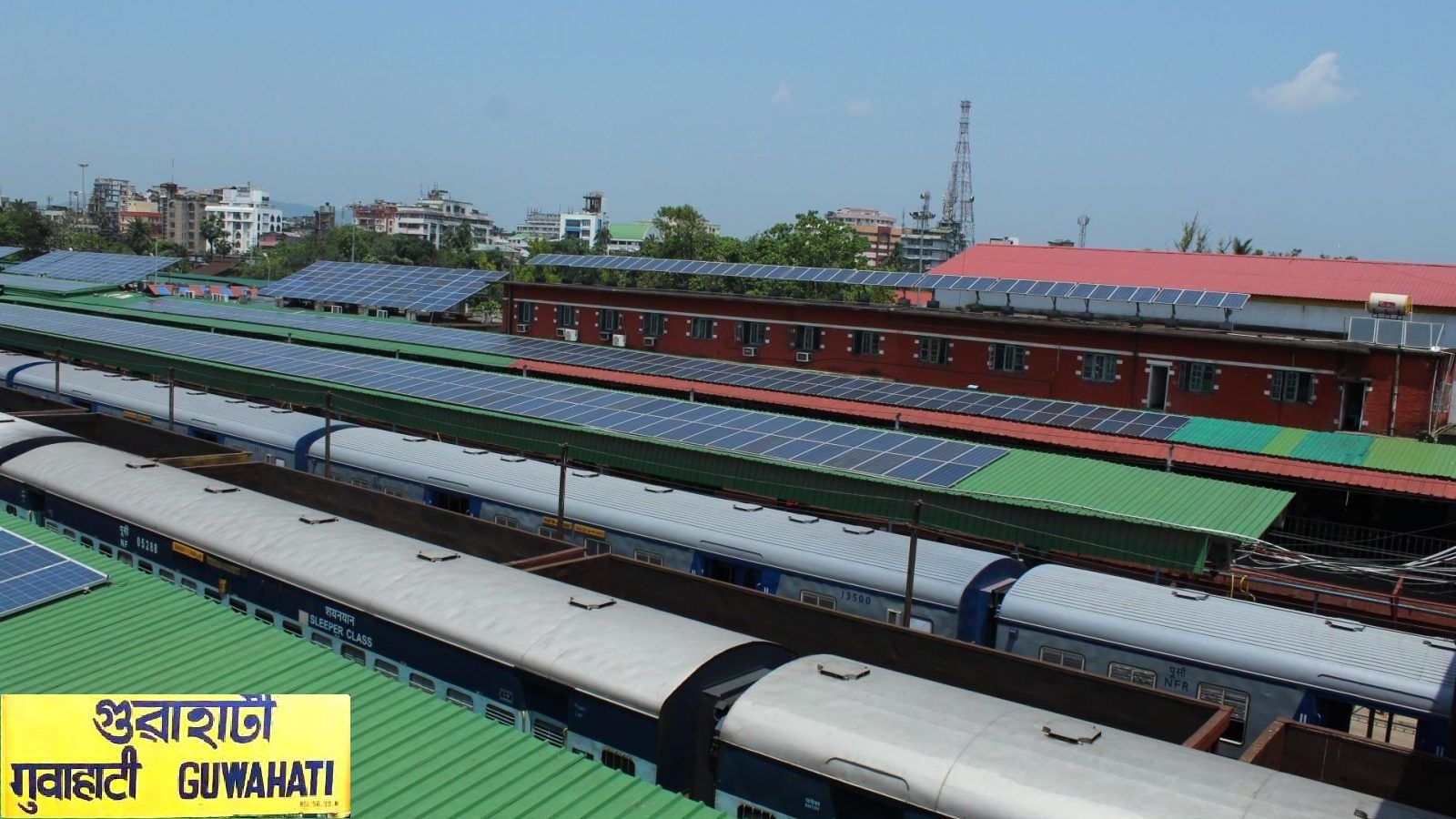- 195 reads

Indian railway has the fourth largest network in the world. With freight, passengers, goods, tourists and suburban railway systems, Indian railways transport around 2.5 crore people daily.
With such network, the electricity consumed by our railway network is huge. Currently, Indian railways consume 18.5 billion units of electrical energy every year. Out of this, 16 billion is consumed in running the railways and the rest 2.5 billion is used in various miscellaneous activities.
Due to such heavy demand for electricity, the Indian government is planning to shift its resources towards more renewable sources.
India is one of the top most polluted countries in the world. In 2016, India was ranked as the fourth largest carbon emitter in the world.
To tackle this problem, India took up an ambitious plan to produce 175GW of renewable energy by the year 2022. It is predicted that nearly 57% of countries energy demands will be fulfilled using renewable sources by the year 2027. With more reliance on renewable energy, it is also important to reduce our dependency on fossil fuels.
In the midst of this nationwide surge in adopting renewable energy sources, the Indian government is planning to obtain nearly 25% of its electrical demands for railways from the renewable sources by 2025.

Moving towards Solar energy
Currently, Indian railways use both renewable and non-renewable source of energy to produce electricity.
With rising demands of electricity and global demand of climate control, India is planning to set up various renewable energy plans including 1000MW of solar energy and 200MW of wind energy.
With the northern side of the country experiencing nearly 300 days of sunlight, the government is pushing its renewable demands more towards solar energy projects.
Out of 1000 MW of solar power, contracts for 120 MW of rooftop solar energy is already drawn, 400 MW and 50 MW of solar energy is in negotiations with Madhya Pradesh and Chhattisgarh respectively.
Two windmills of 26 MW and 10.5 MW are already commissioned and 16.5 MW is expected at the beginning of 2019.
To attain the solar energy goal, the government is emphasizing more on rooftop solar energy panels. In the Union Budget for the year 2017-2018, Finance Minister Arun Jaitley announced that 7000 Indian railway stations will be installed with solar capacity by the year 2025. Out of which 300 stations were already fitted with solar panels in the year 2017.
Additionally, 250 solar rooftops will be installed and tested on the railway rooftops, to power fans and lighting systems.
In its attempt to launch long-term solar energy consumption, the first solar-powered train was launched from a railway station in Safdarjung in Delhi, in July 2017 and Guwahati in Assam became the first fully solar powered railway station in the year 2018.

The Success of Railway Electrification
Electrification of Indian railways is a great step towards consuming renewable energy. Since India has such a huge railway network, it consumes over 2% of the country’s total power generated.
In 2013, Oil was supporting around two-thirds of all the rail activities, with only one-third of energy demands met by renewables.
The project undertaken is pioneering, but also ambitious considering the amount of energy we need to produce. With inherited problems of solar energy like its availability during the night and the rainy season, the path to achieving 25% dependency on renewables needs more input.
With its goal of achieving 100GW of solar energy by the year 2022, many are optimistic about Indian railways achieving its goal by the year 2025. In the year 2018, India managed to add 9GW of solar energy to its capacity.
In September 2018, Union cabinet passed the bill of complete electrification of broad gauge railway tracks by 2022.
This electrification programme will invite new investment in the railway sector, paving the way to fund renewable energy projects.
The programme of Electrifying railway broad gauge is the brainchild of our current railway minister Piyush Goyal. The Minister has already contributed to the renewable energy project by committing Japan’s 20 billion dollar Softbank investment.
The Union Railway minister also announced that Indian Railways is planning to go big in its green initiatives and become a net-zero carbon emitter by the year 2030.
India is taking its commitment to climate change seriously, with top most polluted cities being in India, each step towards renewable energy is laying the foundation for a better and cleaner future.
The projects are yet under its initial stage and hence its efficiency cannot be measured as of now. It is yet to be seen whether the official claims match the staggering volume that needs to be produced. But with foreign investment and technologies, many renewable projects are already in the pipeline.
It is emphasized by the government that the plan to achieve clean energy for Indian railways can be achieved with the collective effort towards the common goal.

